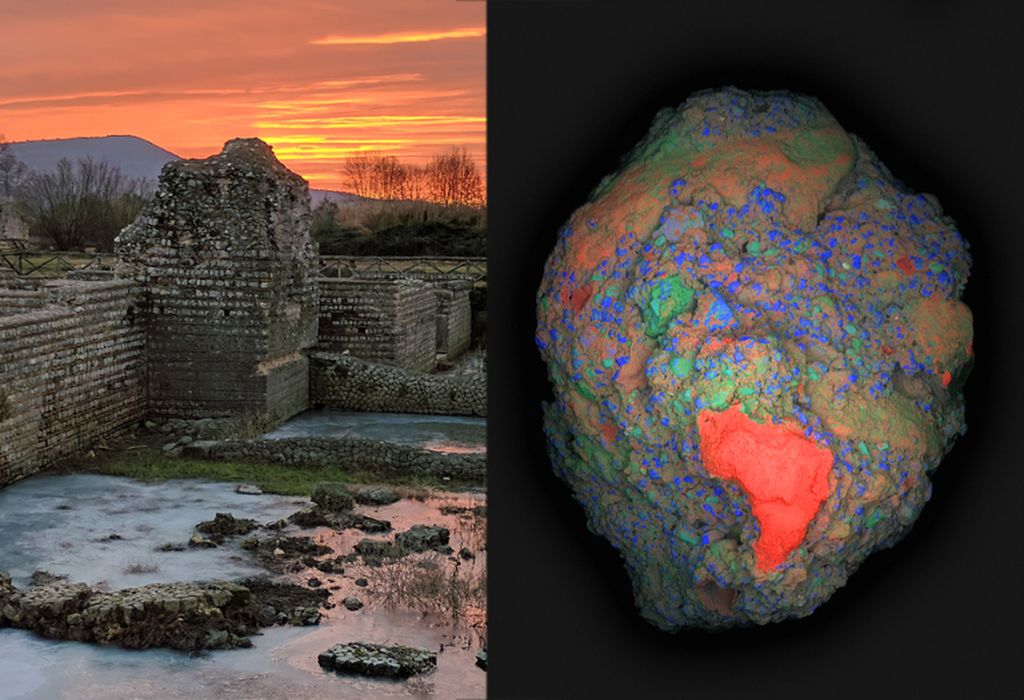
MIT has discovered something interesting about concrete that could affect construction 3D printing.
Construction 3D printing is the process of extruding specialized concrete mixes from a moving extruder, much like an FFF 3D printer toolhead might do. Except that with construction 3D printing, you’re talking about large-scale buildings made from concrete.
Challenges in Construction 3D Printing
To make these systems work, each construction 3D printer manufacturer has spent considerable effort to develop suitable concrete mixes. It’s a bit of a paradox: the concrete must be loose enough to be easily pumped and travel through the toolhead, but at the same time, it must be sufficiently rigid to stand up on its own when extruded.
A major problem is in the flow to the toolhead, as this requires additional water in the mix.
You get the idea: it’s a tricky business.
Self-Healing Concrete: The Roman Secret
Now there is another twist: MIT researchers have identified the specific method used by ancient Roman builders to produce self-healing concrete.
You might ask why the road you’re driving on has to be replaced every few years, while some Roman roads and buildings have lasted for literally two thousand years without replacement. The secret has been in the peculiar chemistry of their concrete.
After the fall of the Empire, the secret to making this concrete mix was lost. Many have speculated on the nature of the missing formula, but no one was able to duplicate this material.
Recently, researchers focused on small white chunks within Roman concrete samples, which they call lime clasts. These had been thought to be contaminants accumulated during sloppy building practices, but it turns out they were the secret ingredient. Apparently, the Romans added quicklime to their concrete mixtures.
MIT explains how this works:
“During the hot mixing process, the lime clasts develop a characteristically brittle nanoparticulate architecture, creating an easily fractured and reactive calcium source, which, as the team proposed, could provide a critical self-healing functionality. As soon as tiny cracks start to form within the concrete, they can preferentially travel through the high-surface-area lime clasts. This material can then react with water, creating a calcium-saturated solution, which can recrystallize as calcium carbonate and quickly fill the crack, or react with pozzolanic materials to further strengthen the composite material. These reactions take place spontaneously and therefore automatically heal the cracks before they spread.”
The researchers were able to prove the concept works by casting two samples, one with and one without quicklime. After cracking each, they observed the quicklime version to completely heal itself within two weeks. Incredible!
Implications for Construction 3D Printing
How can this be used? Certainly, it could help reduce highly polluting concrete production by making buildings last longer.
But it could also be used in construction 3D printing. MIT’s Admir Masic explains:
“It’s exciting to think about how these more durable concrete formulations could expand not only the service life of these materials but also how it could improve the durability of 3D-printed concrete formulations.”
The new discovery would seem straightforward to implement. Since construction 3D printers already specially prepare their materials, we just might see 3D printed buildings with this material soon.
A Future with Durable 3D Printed Buildings
Imagine, two thousand years from now, sitting in a 3D printed building.
The potential impact of incorporating this ancient Roman technique into modern construction 3D printing is immense. With self-healing concrete, we can expect longer-lasting, more durable, and environmentally friendly buildings. This innovation has the potential to revolutionize the construction industry and how we approach urban planning and infrastructure development.
Furthermore, the implementation of self-healing concrete in 3D printed buildings could lead to a significant reduction in maintenance costs and resources, enabling more efficient and sustainable construction practices.
As research continues and the practical applications of this ancient Roman secret become more widely adopted, we may soon witness a new era in construction 3D printing – one that combines historical knowledge with cutting-edge technology to create a better, more sustainable future.
Maybe one of these days someone will announce an “SPQR” construction printer.
Via MIT
